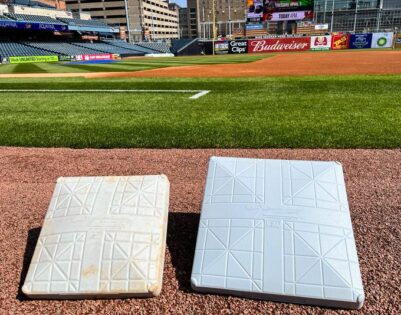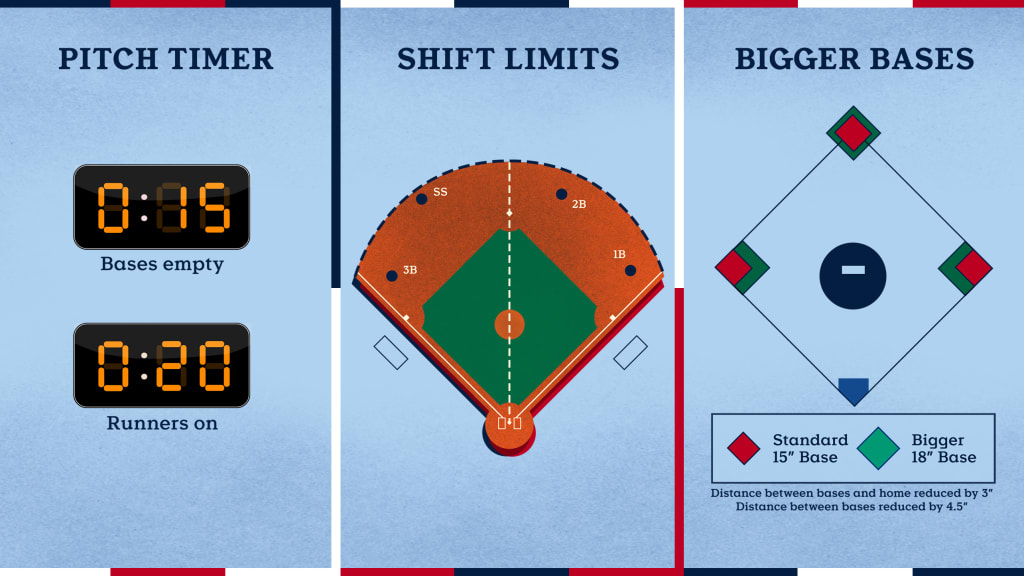Three of the five major rule changes for the 2023 season are shown. Photo courtesy of MLB
By Raymond Castillo Sports Editor
The warm desert sun of Arizona and the loving tropical conditions known as Florida welcomes the finest 30 Major League Baseball teams and their members to a new year of opportunity and excitement. All 30 MLB teams have reported to their spring training sites in either Arizona or Florida to begin the 2023 season earlier than years past because of the World Baseball Classic beginning March 7.
In addition to an earlier start date for spring training, the MLB has implemented a few new rules aimed to increase the pace of play. All the new rules have been implemented in the minor leagues at various levels with mixed results.
New Rules:

Bigger Bases-
The bases on the field have increased in size from 15 to 18 inches. The increase in size is expected to increase player safety by allowing more surface area for the runner and fielder to step on. In addition to player safety, larger bases are implemented to promote the increase of base stealing. With larger bases and a shorter distance between them, players should be inclined to take the risk more often.
Limiting the shift-
At the time of the delivery of a pitch, all four infielders must be on the infield dirt/grass. Also, two players must be on both sides of the second base. This change eliminates the popular shift that has severely punished left-handed hitters by placing 3 players on the right side of second base and covering most if not all the holes traditionally exploited by left-handed hitters. The penalty of an illegal shift is an added ball to the count or the offense can choose to let the play stand if they choose.
Pickoffs-
Beginning this season, a pitcher is allowed to disengage the rubber twice per at-bat. Disengagement of the rubber is anytime the pitcher removes his foot from the rubber on the mound for any reason. That could be a full pickoff attempt, a step-off to reset the signs from the catcher, or when the defense calls time. The consequence of a third disengagement during the at-bat results in a balk and the runners on base are allowed to advance.
Pitch Clock-
Pitchers are allowed 15 seconds maximum to deliver a pitch with no runners on base and 20 seconds with runners on base. The pitch clock will stop when the pitcher begins his motion to deliver the pitch. If the pitcher fails to begin his motion before the clock expires, a ball will be added to the count. The batter must also be in the batter’s box before the pitch clock expires otherwise a strike will be added to the count.
Position Players Pitching-
A position player may only pitch in a game if their team is winning by six runs or losing by six runs, or if the game is in extra innings. Players who earn the status of “two-way player” by MLB’s definition such as Shohei Ohtani are also allowed to pitch whenever the team needs in a game. Over the last few years teams have used position players in an attempt to preserve their full-time pitcher’s arms for future games. As a result, the integrity and competitiveness of the game have suffered.
The new rules will be implemented immediately for the first spring training games beginning Feb. 24. Spring training will run until March 28 and give way to MLB’s Opening Day on March 30 with all 30 teams playing their first game on the same day since 1969.

